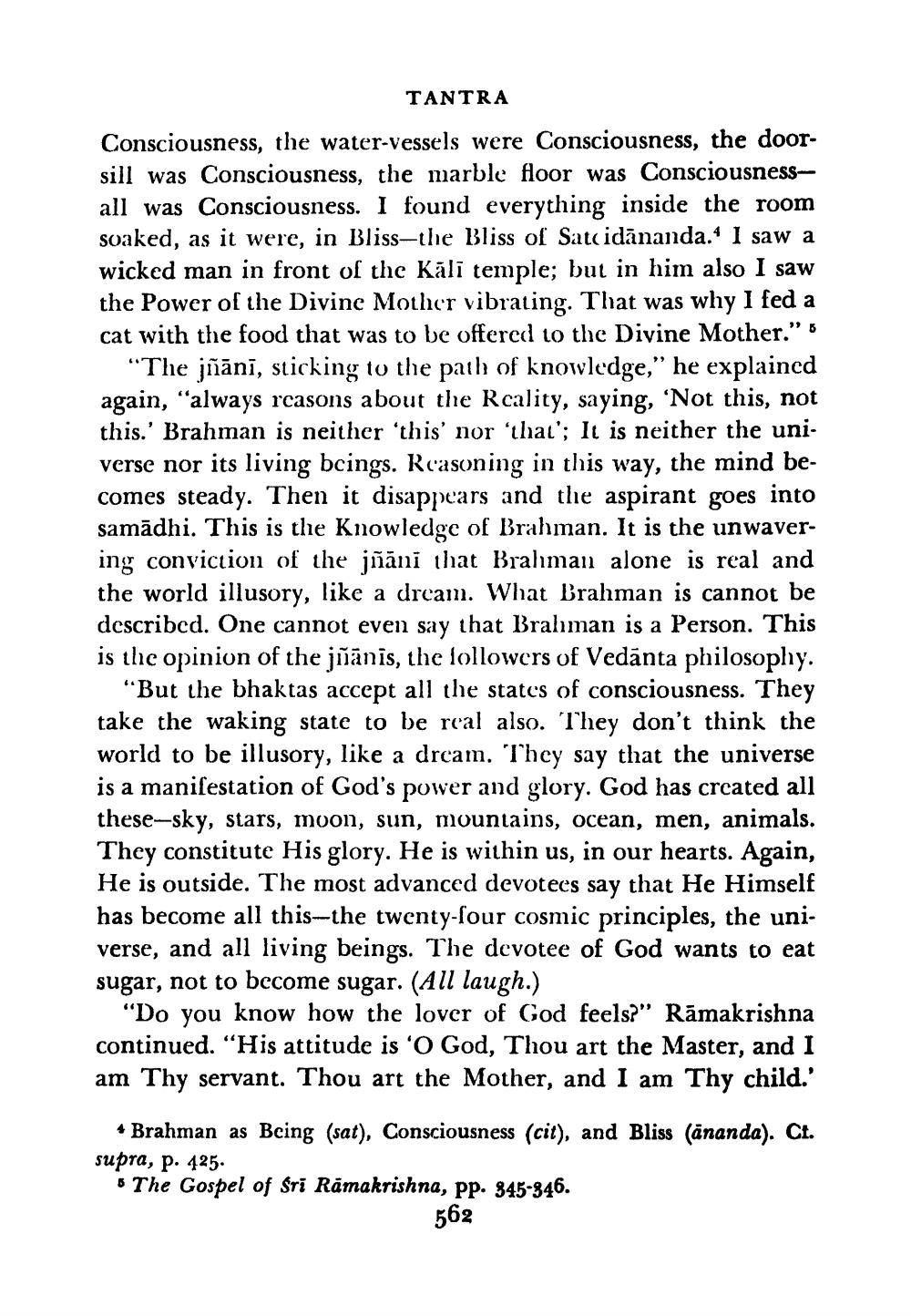________________
TANTRA
Consciousness, the water-vessels were Consciousness, the doorsill was Consciousness, the marble floor was Consciousnessall was Consciousness. I found everything inside the room soaked, as it were, in Bliss-the Bliss of Satcidananda.1 I saw a wicked man in front of the Kali temple; but in him also I saw the Power of the Divine Mother vibrating. That was why I fed a cat with the food that was to be offered to the Divine Mother." 5
"The jñānī, sticking to the path of knowledge," he explained again, "always reasons about the Reality, saying, 'Not this, not this.' Brahman is neither 'this' nor 'that'; It is neither the universe nor its living beings. Reasoning in this way, the mind becomes steady. Then it disappears and the aspirant goes into samādhi. This is the Knowledge of Brahman. It is the unwavering conviction of the jñāni that Brahman alone is real and the world illusory, like a dream. What Brahman is cannot be described. One cannot even say that Brahman is a Person. This is the opinion of the jñānis, the followers of Vedanta philosophy.
"But the bhaktas accept all the states of consciousness. They take the waking state to be real also. They don't think the world to be illusory, like a dream. They say that the universe is a manifestation of God's power and glory. God has created all these-sky, stars, moon, sun, mountains, ocean, men, animals. They constitute His glory. He is within us, in our hearts. Again, He is outside. The most advanced devotees say that He Himself has become all this-the twenty-four cosmic principles, the universe, and all living beings. The devotee of God wants to eat sugar, not to become sugar. (All laugh.)
"Do you know how the lover of God feels?" Rāmakrishna continued. "His attitude is 'O God, Thou art the Master, and I am Thy servant. Thou art the Mother, and I am Thy child.'
* Brahman as Being (sat), Consciousness (cit), and Bliss (ānanda). Ct. supra, p. 425.
The Gospel of Śrī Rāmakrishna, pp. 345-346.
562




